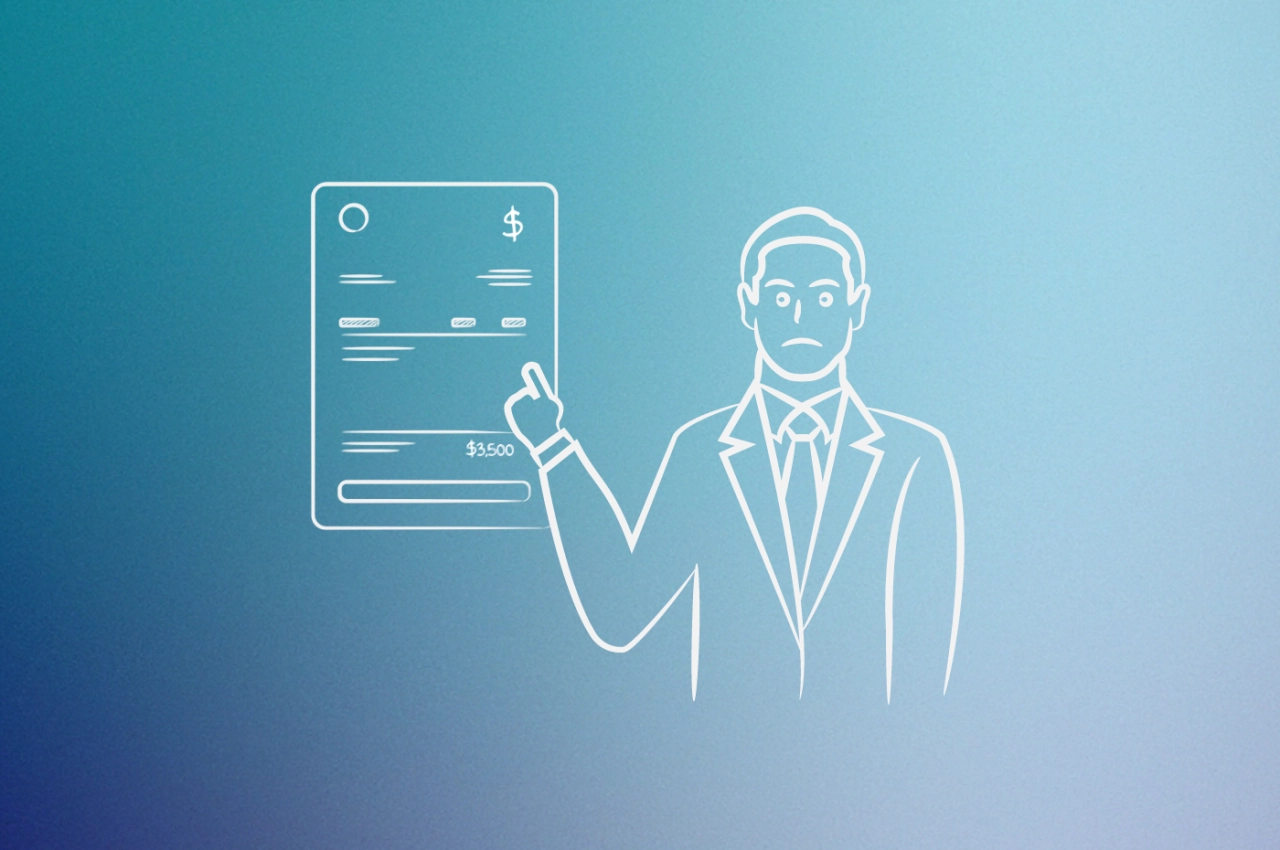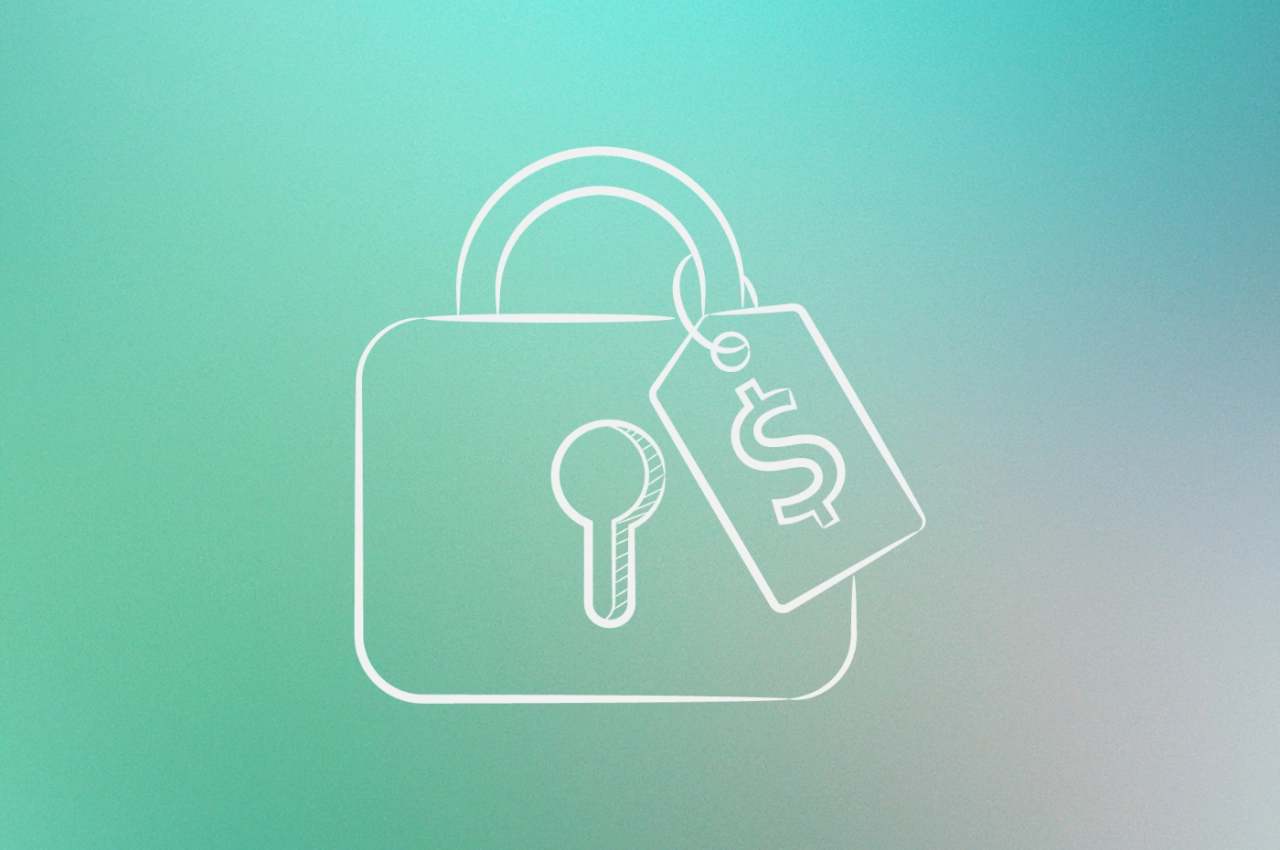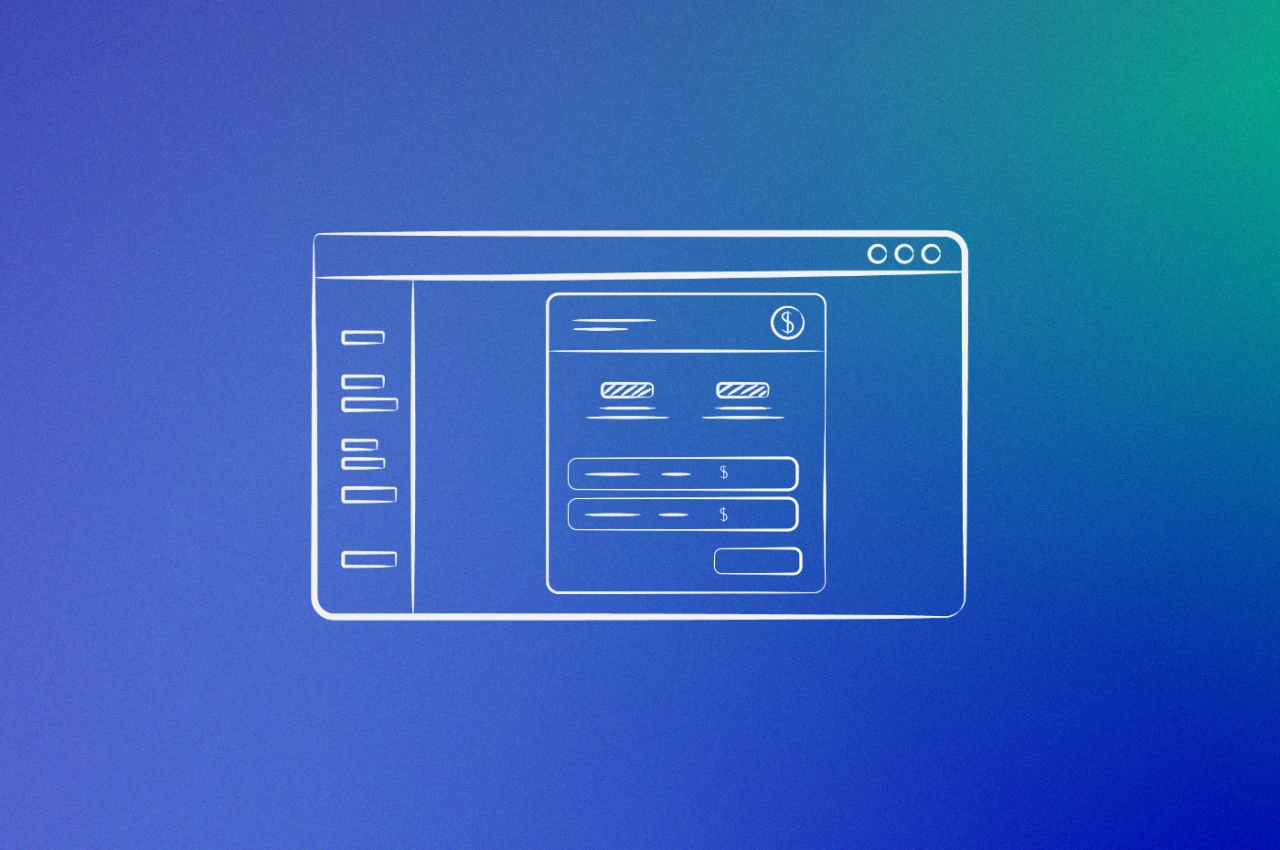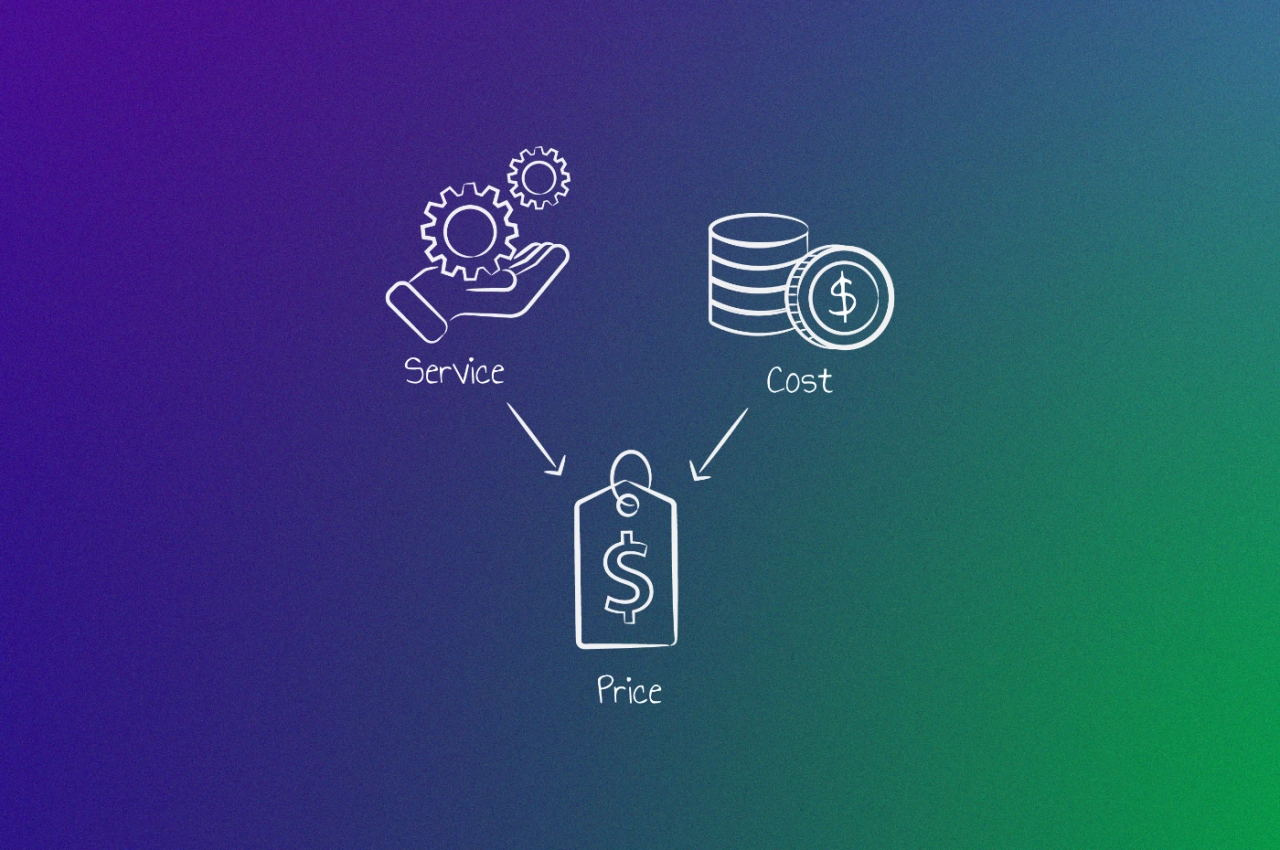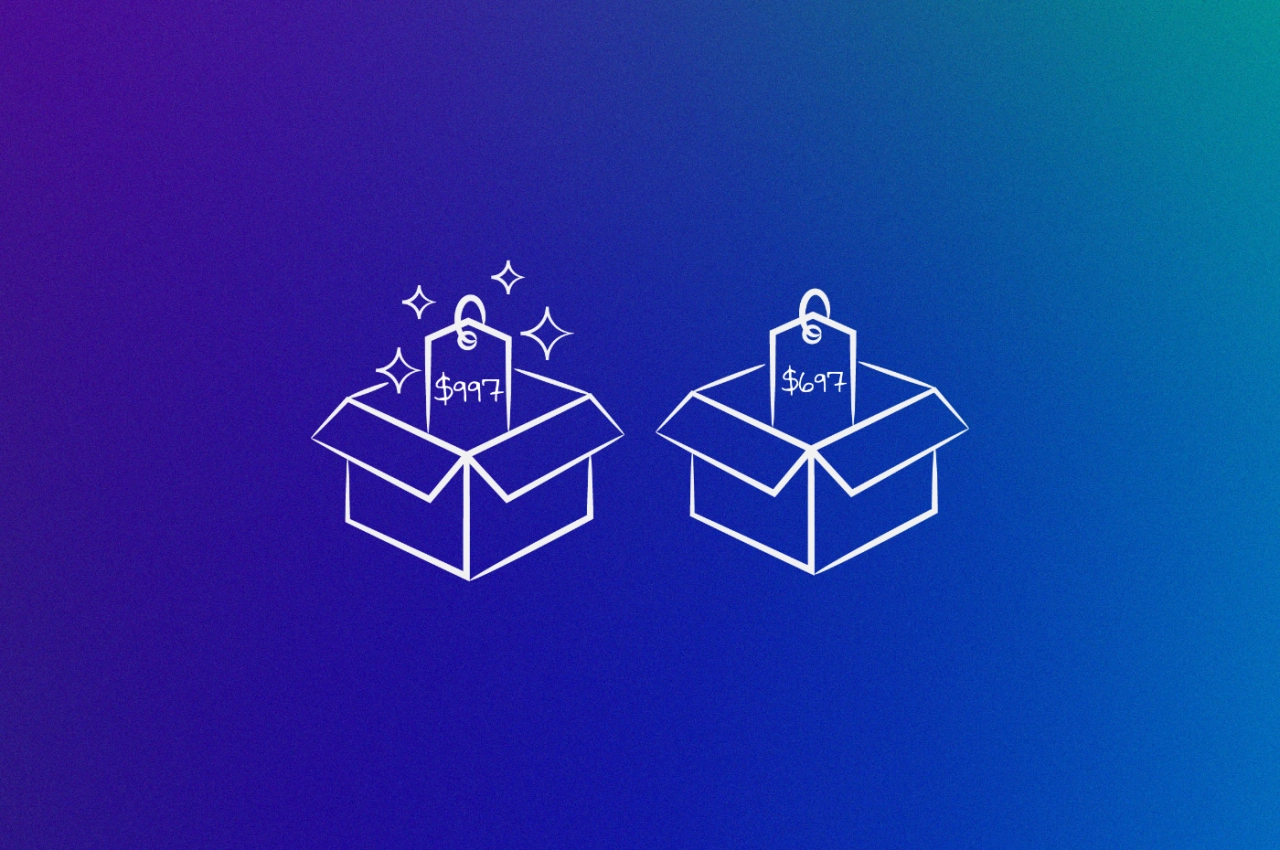- A disputed invoice is a commercial bill of exchange that has been challenged or questioned by the recipient regarding its validity, accuracy, or authenticity.
- Disputes over invoices can have significant consequences for businesses, including lost time, money wasted, and damaged relationships with clients.
- To effectively handle disputed invoices, it’s essential to follow a clear dispute resolution process that includes identifying the core issue, and resolving billing conflicts.
You’ve poured 25 hours into building that perfect landing page, delivered it on time, invoiced the customer—and then… silence. Two weeks later, the dreaded email arrives: “We'd like to discuss some issues with your invoice before processing payment.”
Sound familiar? Invoice disputes cost agencies time and money. According to QuickBooks research, 65% of small to medium-sized businesses spend a staggering 14 hours per week dealing with late invoices —that’s nearly 3 hours every day wasted on payment issues. A study by InvoiceOwl reports that 61% of late payments stem from invoice disputes, while MarketInvoice data shows that 45.7% of all invoices in the United States are paid late.
As a former freelancer, I know how disputed invoices can drain both your time and mental energy. The good news? With the right preventative measures and a clear resolution process, you can reduce disputes by up to 80% and resolve the remaining issues in half the time.
In this guide, I’ll show you a proven 3-step framework for handling invoice disputes—plus give you actionable strategies to prevent them from happening in the first place.
What is a disputed invoice?
A disputed invoice occurs when a client challenges an invoice’s validity, accuracy, or authenticity. While most articles simply define disputes, let’s create a practical framework to help you identify and resolve them more efficiently.
Understanding the dispute spectrum
Based on industry research and common dispute patterns, we can categorize invoice disputes into three main types:
TYPE | EXAMPLES | TYPICAL RESOLUTION APPROACH |
|---|---|---|
Administrative | Incorrect dates or amounts | Documentation review |
Deliverable | Quality concerns | Client discussion |
Relationship | Contract term disagreements | Formal negotiation |
This classification helps you quickly assess what you’re dealing with and apply the appropriate resolution strategy.
Dispute resolution priority guide
When a client questions an invoice, determine which type you’re facing:
Administrative disputes typically require verification and correction rather than negotiation
Deliverable disputes need evidence of work completed according to specifications
Relationship disputes often require reviewing original agreements and expectations
Understanding the nature of the dispute helps you gather the right documentation and approach the conversation appropriately. This systematic approach can significantly reduce resolution time and prevent disputes from escalating.
Spotting dispute signals in Stripe
When clients challenge an invoice processed through Stripe, you need to act quickly. Here’s how Stripe notifies you about potential disputes and what the signals look like:
Stripe alerts you through multiple channels when a dispute is initiated:
Email notification: Stripe sends an immediate alert containing dispute details and deadline information
Dashboard alerts: A notification appears in your Stripe Dashboard
Webhooks: If configured, your system receives programmatic notifications
API events: Accessible via the Stripe API for automated handling
Stripe also provides pre-dispute signals that can help you address issues before they escalate:
Some card networks initiate a “preliminary phase” before creating a formal dispute. Stripe calls this an “inquiry” (sometimes also called a “retrieval” or “request for information”). American Express and Discover frequently use this phase, giving you a chance to resolve issues before they become formal disputes.
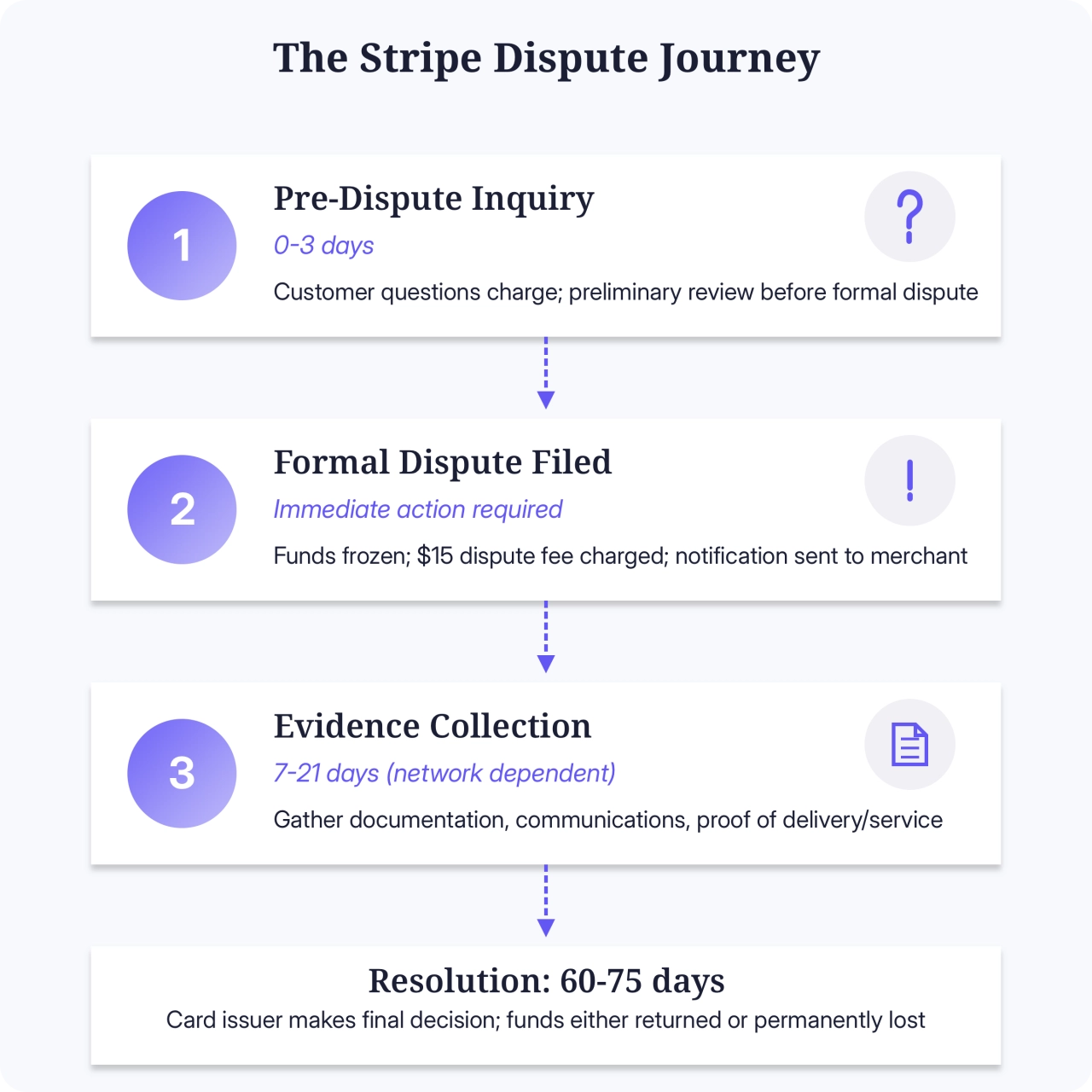
What you’ll see in the dashboard:
Pre-dispute inquiry: Labeled as “Inquiry” or “Dispute Inquiry”
Formal dispute: Clear dispute notification with reason code
Evidence collection period: Countdown timer showing your deadline
Dispute fee: $15 charged immediately (may be refunded in Mexico, but non-refundable elsewhere)
Pro tip: When Stripe notifies you of a dispute, you have the option to accept or challenge it through the Stripe Dashboard. For invoice disputes specifically, gather all documentation including communications, signed agreements, delivery confirmations, and usage logs.
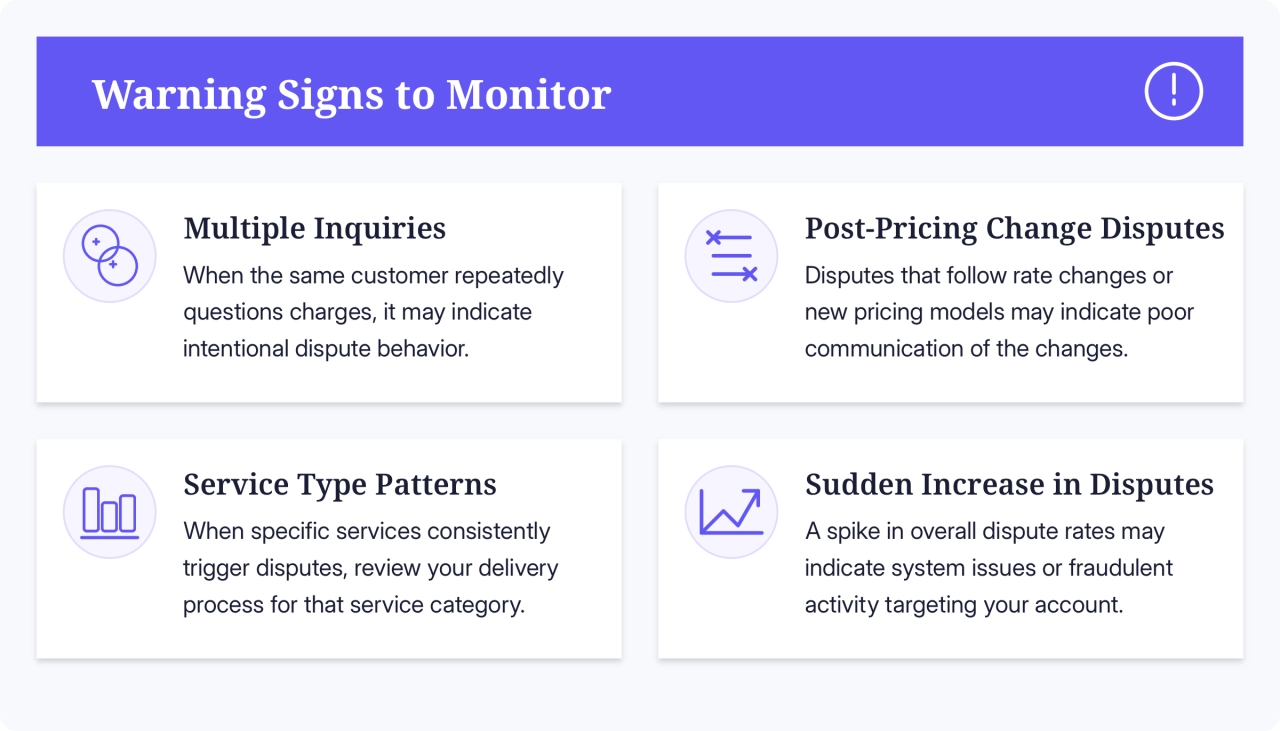
Using SPP.co alongside Stripe provides an additional layer of protection, as all client communications, agreements, and deliverables are documented in a central location, making evidence collection for disputes significantly faster.
The impact of disputed invoices
Disputes are a sad reality of every business. As much as you strive to avoid them, you’ll most likely only be able to reduce the number of disputes. And that alone can save your business because dealing with them takes time away from more important tasks.
The biggest impact of disputed invoices is therefore time lost—and, money wasted. Instead of working on your projects, you have to document one that you thought had ended, only to receive what you’re entitled to—your money.
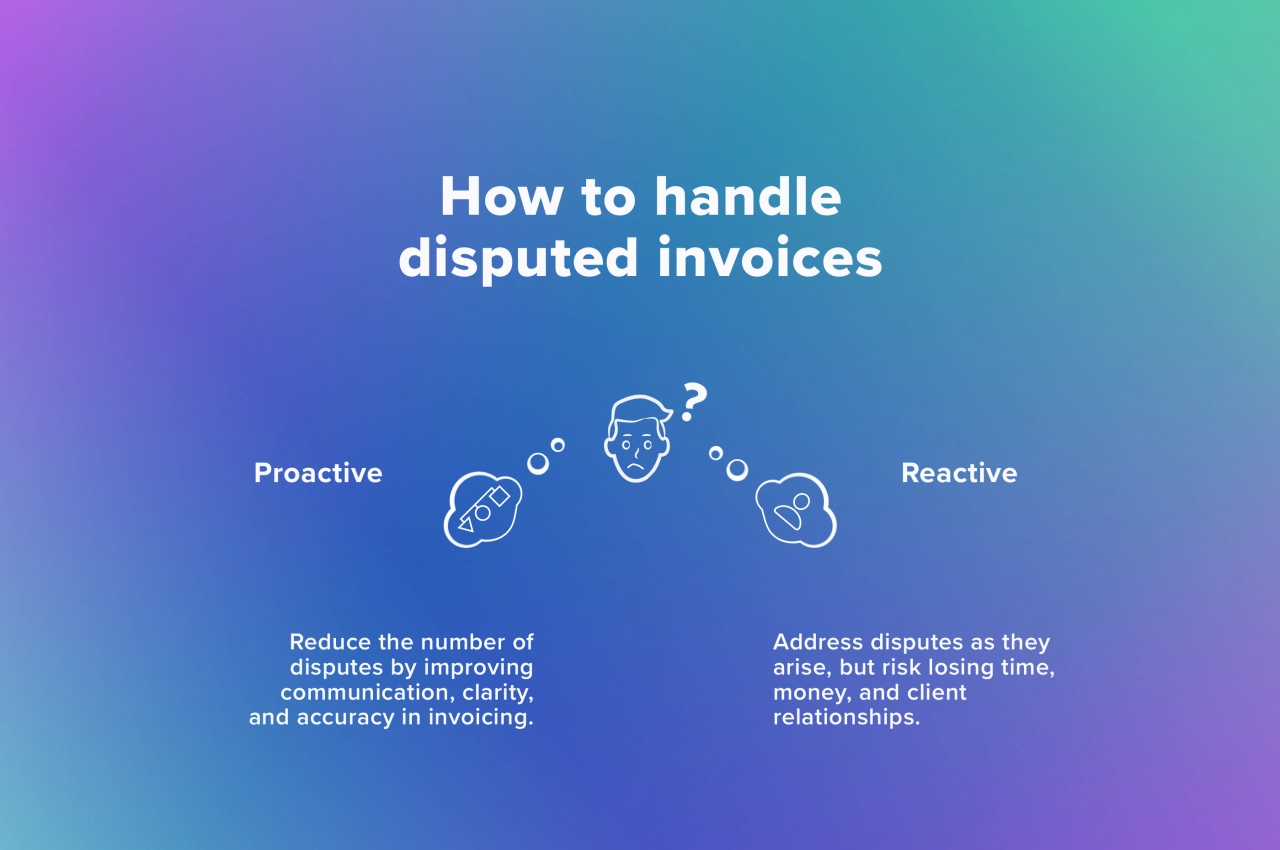
Another impact is the damaged relationship between your agency and your clients. A client that has raised a dispute might never want to work with you again.
Lastly, there’s a chance of accounting errors that might get you in trouble if your agency gets audited. All in all, it’s in your best interest to have a process for dispute resolution in place, and one for prevention, too.
7 common causes of invoice disputes
If you’re wondering why you’re always chasing overdue payments, and they end up in disputes, let me introduce you to the most common reasons.
Overcharging or incorrect billing
incorrect quantity of services provided
excessive charges for services (e.g., setup fees)
Incorrect payment terms
failure to specify clear payment terms in the contract or agreement
Unapproved expenses or unauthorized charges
unrelated third-party payments made on behalf of the client without authorization
Changes to scope or specifications
alterations to project requirements that affect invoice amounts
Delayed delivery or poor quality services
failure to meet agreed-upon timelines, leading to rework, delays
Error in calculation or invoicing process
inaccurate calculations for taxes, discounts, or fees
Lack of transparency and clear communication
unclear expectations about billing procedures
lack of regular updates on the status of outstanding invoices
Handling disputed invoices in 3 steps
When a client disputes an invoice, your immediate reaction might be frustration or defensiveness. But with the right approach, you can transform this challenge into an opportunity to demonstrate professionalism and strengthen your client relationship.
Let’s break down our proven 3-step framework for handling invoice disputes effectively.
Step 1: identify the core issue
The first step in resolving any dispute is understanding exactly what you're dealing with. Different types of disputes require different resolution approaches.
The dispute root cause analyzer
Use this decision tree to quickly diagnose the type of dispute you’re facing:
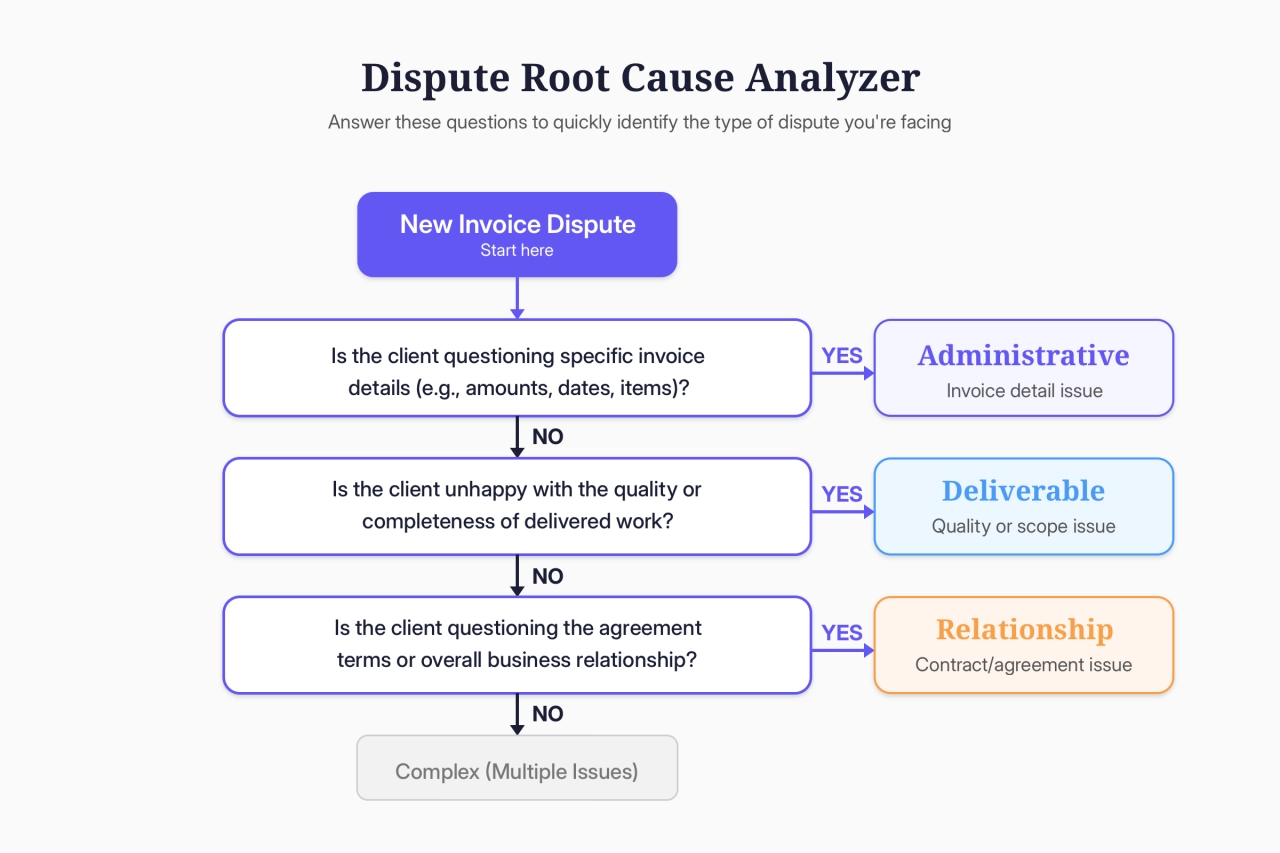
Identifying the correct dispute category gives you immediate insight into which resolution strategy will be most effective:
Administrative disputes are typically the easiest to resolve, often requiring simple corrections or clarifications
Deliverable disputes need evidence and discussion about the work quality or completion
Relationship disputes tend to be the most complex, requiring a review of underlying agreements
Effective vs. ineffective client communications
How you initially respond to a dispute can determine whether it’s resolved quickly or escalates. Here are examples of communications that work—and those that don't:
Ineffective response
I’m confused about why you're disputing this invoice. We completed everything you asked for according to the contract you signed. Payment is due immediately as per our terms.
Why it fails: Defensive tone, assigns blame, doesn’t acknowledge client concerns, demands immediate action—all factors that escalate rather than resolve the situation.
Effective response
Thank you for bringing this concern to my attention. I’d like to understand exactly what aspects of the invoice you’re questioning so we can address them specifically. Could you please clarify which items you’re disputing and why? I’m committed to resolving this fairly.
Why it works: Acknowledges the concern, seeks specific information, shows willingness to resolve, maintains professional tone—creating a collaborative environment for resolution.
Leveraging SPP’s documentation system
One of SPP’s most powerful features for dispute resolution is its comprehensive project history. Every interaction with your client is automatically documented with timestamps:
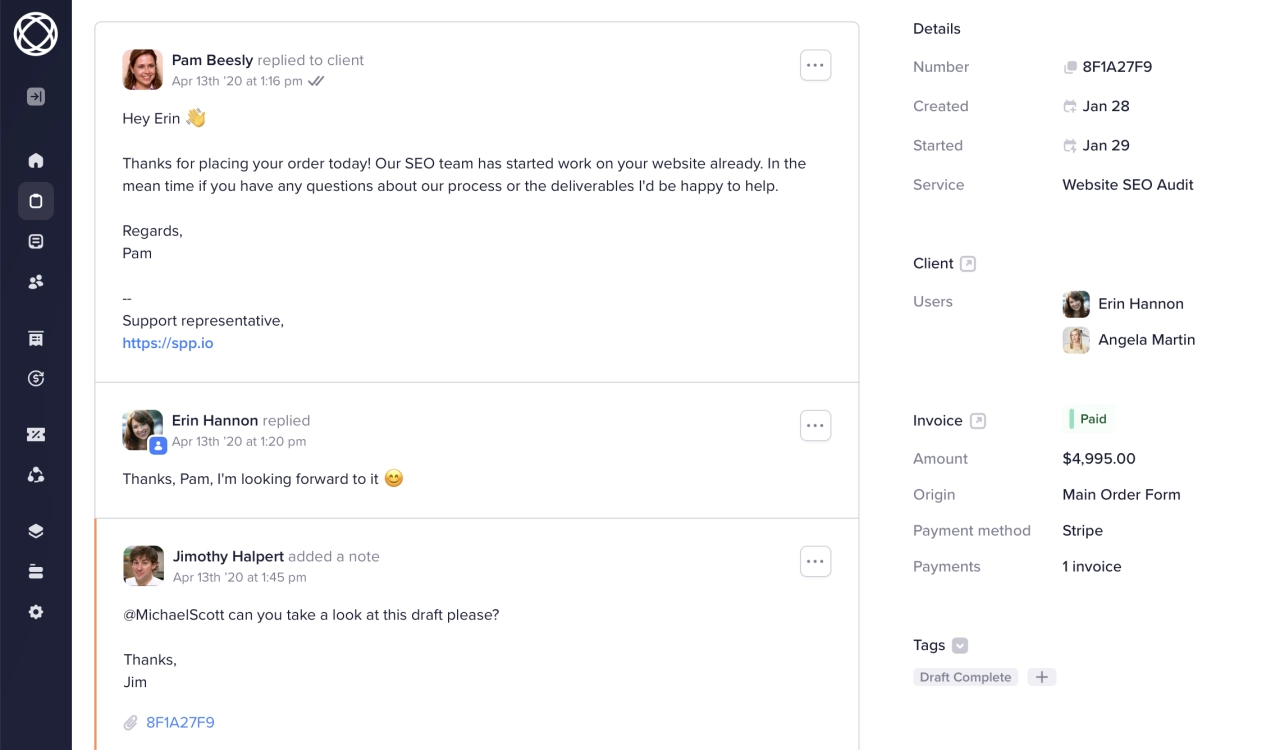
This documentation provides critical evidence when addressing disputes:
Client approvals are recorded with timestamps and IP addresses
Payment history shows exactly when and how much clients have paid
All messages between you and your client create an audit trail
File uploads and deliverables are permanently linked to the project
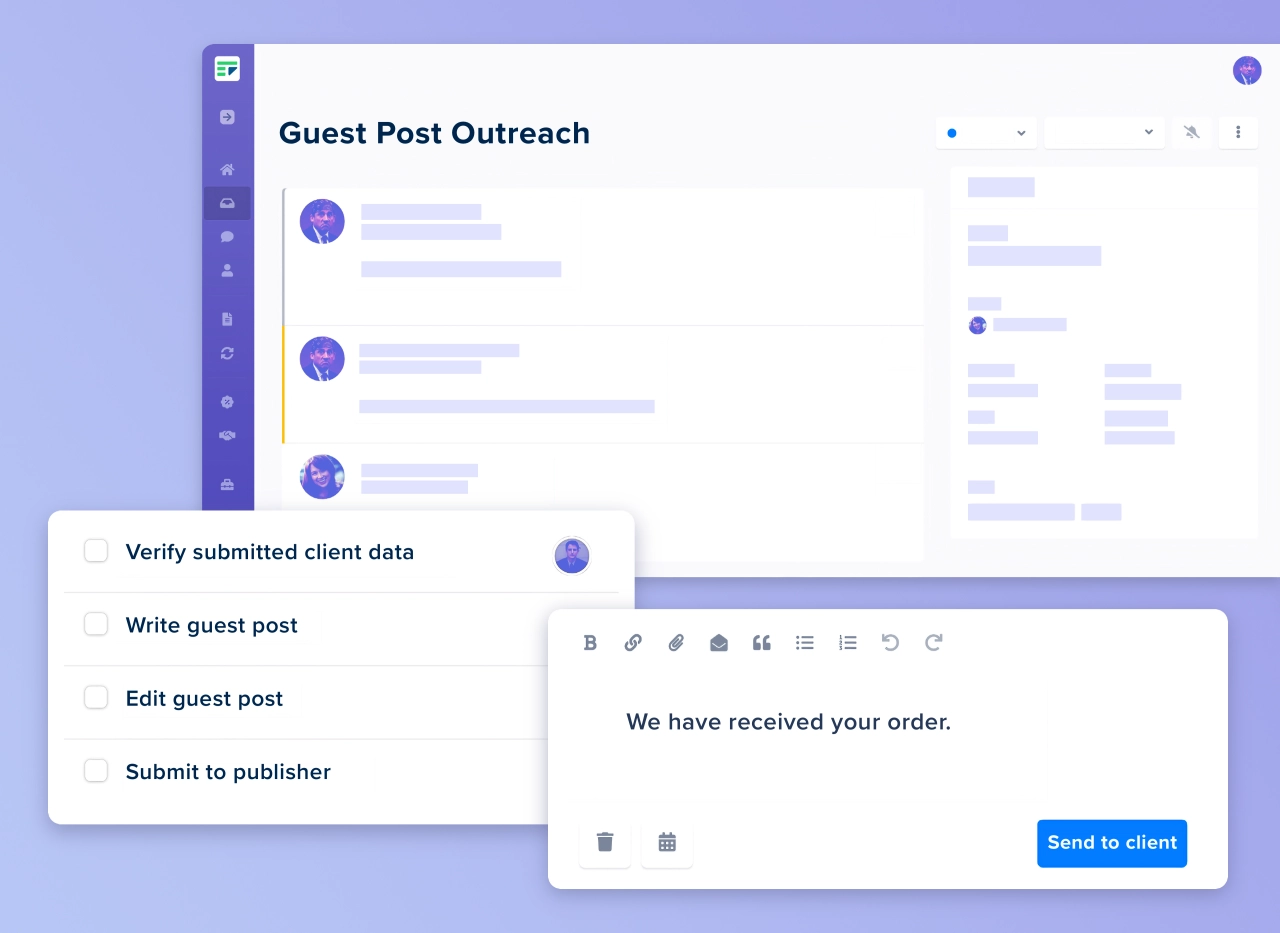
Stay on top of your projects and get your tasks done on time.
When using this documentation in your response, be specific but professional:
I’ve reviewed our project history and can see that on March 15th at 2:45 PM, you approved the final deliverable via the client portal (approval ID #45721). The invoice was generated according to our agreed terms on that same day. I’ve attached screenshots of the approval confirmation for your reference.
Having this documentation means you’re never relying on memory or “he said, she said” situations—you have concrete evidence of every project milestone and approval.
Pro tip: Always gather your documentation before responding to a dispute. When clients see you have detailed records of all communications and approvals, they’re often more willing to resolve issues quickly.
Now that you’ve identified the dispute type and gathered documentation, you’re ready for the next step: resolving the billing conflict.
Step 2: resolve billing conflicts
Once you’ve identified the type of dispute and gathered your documentation, it’s time to address the issue directly with your client. This step requires clear communication, evidence presentation, and sometimes negotiation—all skills that can be significantly enhanced with the right tools.
The evidence escalation ladder
Not all disputes require the same level of evidence. Using a tiered approach helps you resolve issues efficiently without overwhelming your client with unnecessary documentation:
Dispute Level | Evidence Needed | Communication Channel |
|---|---|---|
Minor clarification | Invoice details only | Email or client portal message |
Factual disagreement | Reference materials + proof of delivery | Documented client portal thread |
Contract interpretation | Full project history + signed agreements | Video call followed by written summary |
Payment refusal | Complete documentation package | Formal written communication |
Start at the lowest appropriate level and only escalate when necessary. This prevents disputes from becoming more adversarial than they need to be.
Crafting an effective resolution email
When it’s time to present your case to the client, structure is everything. Here’s a template you can adapt based on your specific situation:
Subject: Resolution for Invoice #[Number] Concerns
Dear [Client Name],
Thank you for bringing your concerns about Invoice #[Number] to my attention. I've carefully reviewed the details you've shared and our project history.
Regarding [specific disputed item], I can see that:
- [Specific evidence point 1]
- [Specific evidence point 2]
- [Reference to documentation in client portal]
Based on our project agreement dated [date], this work was completed according to the specifications you approved on [date] through our client portal.
To resolve this matter in a way that works for both of us, I propose:
[Clear, specific resolution proposal]
Please let me know if this addresses your concerns. I'm available to discuss this further at your convenience.
Best regards,
[Your Name]This template works because it acknowledges the client’s concern, presents evidence factually without being defensive, and offers a specific resolution path forward.
Negotiation strategies that preserve relationships
Sometimes, even with perfect documentation, the most efficient path forward involves some compromise. Consider these approaches based on the dispute type:
For administrative disputes:
Offer to correct any legitimate errors immediately, with clear communication about what changed and why. If the error was on your side, acknowledge it professionally:
You’re absolutely right that the invoice contains an error in the quantity listed. I’ve updated it to reflect the correct amount of 3 revisions instead of 4, reducing the total by $250. The corrected invoice is now available in your client portal.
For deliverable disputes:
When quality or completion is questioned, focus on clear, measurable criteria:
I understand you’re concerned about the mobile responsiveness of the website. I’ve reviewed our original specifications which mentioned compatibility with iOS and Android devices. To resolve this, I can provide a detailed report showing testing results on 5 common devices, or we can schedule a joint review session where we test the site together.
For relationship disputes:
These often involve contract interpretation and require more nuanced handling:
I see we may have different understandings of what unlimited revisions means in our agreement. Our standard practice, as outlined in the terms document, defines this as unlimited rounds of feedback during the designated revision period of 14 days. Since we’re now at day 30, additional revisions would normally incur extra charges. However, I value our relationship and propose we include the current round of revisions at no charge, with any further changes billed at our regular hourly rate.
Pro tip: Document every agreed resolution in writing, even if discussed verbally. In SPP, you can record the outcome in the order discussion thread, which both parties can reference if needed.
With these approaches, you’ll resolve most billing conflicts efficiently while maintaining professional relationships. Now let’s move on to the final step: prevention.
Step 3: prevent client payment issues
The best way to handle invoice disputes is to prevent them from happening in the first place. After helping many service businesses implement better billing systems, I’ve identified the most effective prevention strategies—all of which can be implemented through SPP.co.
The dispute prevention framework
Rather than addressing these issues reactively, implement this proactive framework to dramatically reduce dispute frequency:
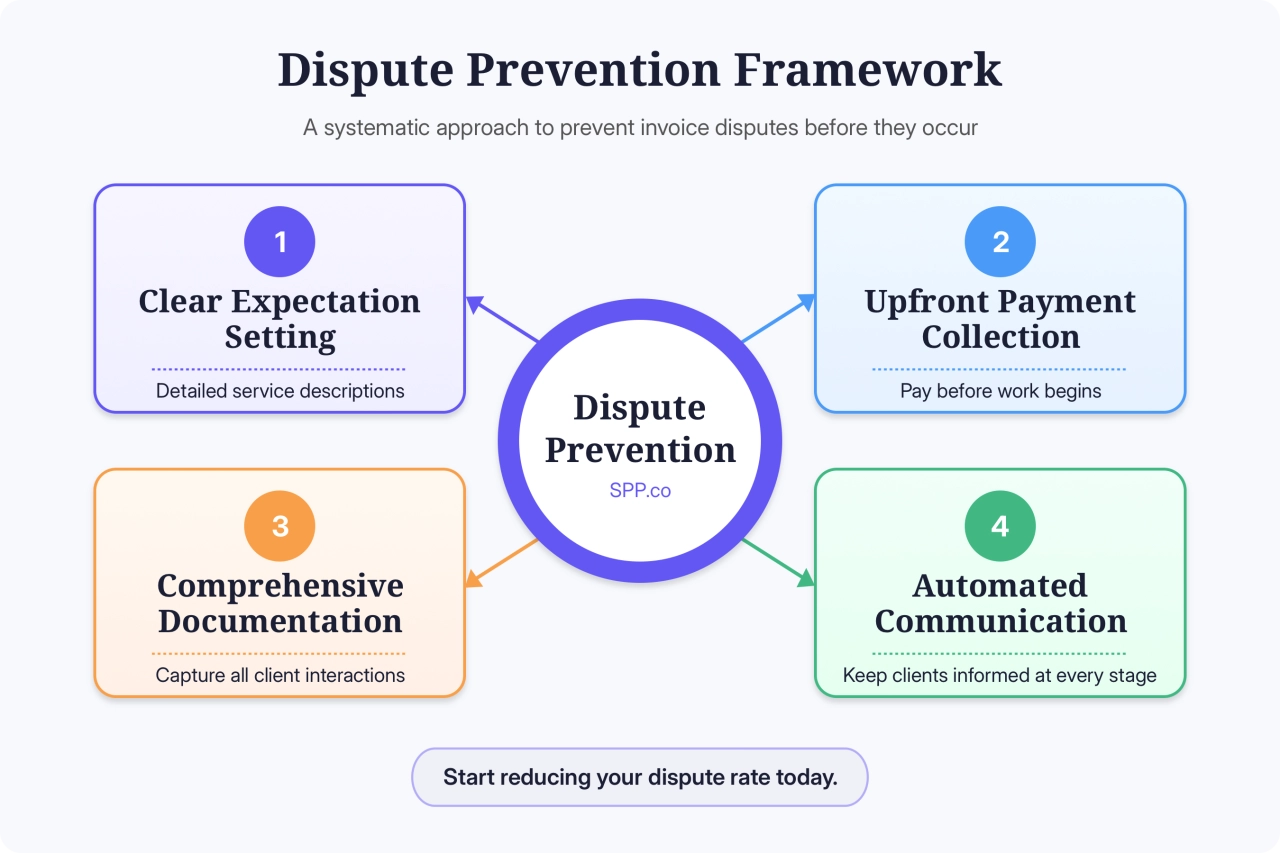
This systematic approach addresses the most common causes of disputes before they occur.
Be proactive: over-communicate, automate where possible, and don’t be afraid to enforce boundaries—it's about respect, not just cash flow.
 Justin Belmont,
Prose
Justin Belmont,
Prose
Clear expectation setting
Miscommunication about deliverables is the leading cause of disputes. When clients understand exactly what they’re getting and when, they’re less likely to question the final invoice.
In SPP, you can:
Create service description templates with detailed bullet points describing inclusions and exclusions
Set up automations in Zapier that notify clients when an order status changes
Use service agreements with clear terms that clients must accept before work begins
Here’s an example of how a vague service description invites disputes:
Problematic: Website design package includes mockups and implementation.
Improved: Professional website design package includes: 2 initial concept mockups, 2 rounds of revisions, implementation of approved design, mobile responsiveness testing on current iOS and Android devices, and 30 days of post-launch support. Does not include: content creation, custom illustrations, or ongoing maintenance beyond 30 days.
Upfront payment collection
The most effective way to prevent payment disputes is to collect payment before beginning work. This approach fundamentally changes the client-agency dynamic in a positive way.
In SPP, all payments are upfront based on the productize service businesss model. The advantage is that, when clients have already paid, they’re incentivized to provide timely feedback and clear communication to ensure they get maximum value from their investment.
Automated communication
Many disputes arise from simple misunderstandings or forgotten details. Automated communication ensures clients stay informed at every stage:
Order confirmation emails: Sent immediately after purchase, reiterating exactly what was purchased
Payment reminders: Sent daily if overdue
All of these can be customized in SPP under Settings → Emails.
Implementing a preventative system
The dispute prevention framework isn’t just theoretical—it can be implemented as a concrete system in SPP. Here’s a four-week implementation plan:
Week 1: Service definition audit
Review and update all service descriptions
Create detailed scope documents for each service
Update terms and conditions to address common dispute triggers
Week 2: Client communication templates
Develop standardized onboarding messages
Create project kickoff questionnaires via onboarding forms
Set up templated messages for faster communication
Week 4: Testing and refinement
Test the system with a new client
Gather feedback on clarity and expectations
Refine processes based on initial results
Measuring success
How do you know if your prevention system is working? Track these key metrics:
Dispute rate: The percentage of invoices that receive some form of dispute
Time to resolution: How long it takes to resolve disputes that do occur
Resolution type: The percentage of disputes resolved in your favor vs. requiring compromise
Client satisfaction: Post-resolution satisfaction scores
By implementing these strategies, you'll not only minimize the time and energy spent on disputes but also improve overall client satisfaction and agency profitability.
Building a dispute-resistant agency
Throughout this guide, I’ve covered the complete lifecycle of invoice disputes—from identification to resolution to prevention. By implementing the frameworks and strategies outlined here, you’re not just solving a temporary problem—you’re fundamentally transforming how your agency handles client relationships and payment processes.
The dispute root cause analyzer helps you quickly diagnose issues, while the evidence escalation ladder ensures appropriate responses. Most importantly, the dispute prevention framework transforms your entire approach to client billing.
Most importantly, this approach shifts your business from reactive firefighting to proactive relationship building. With clear expectations, proper documentation, and automated communication, you create an environment where disputes rarely arise—and when they do, they're resolved quickly and professionally.
